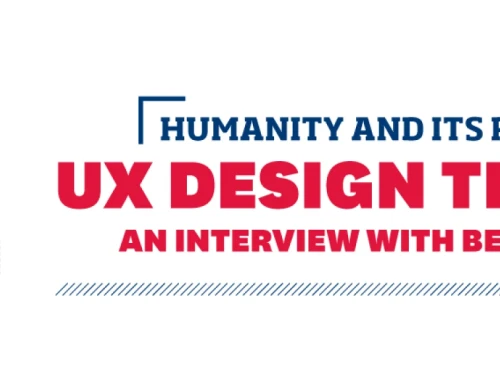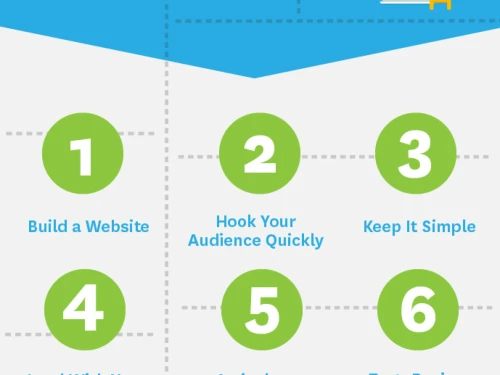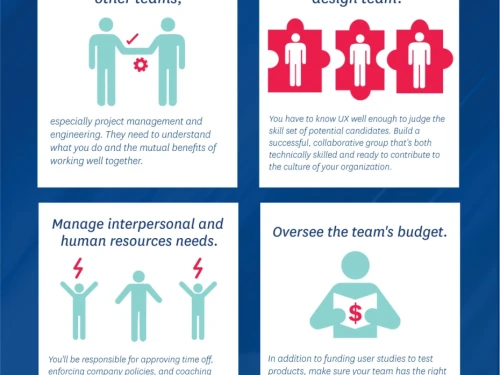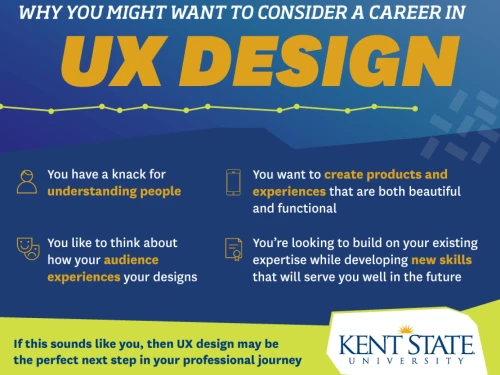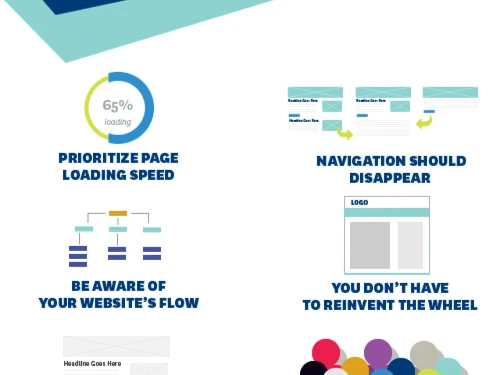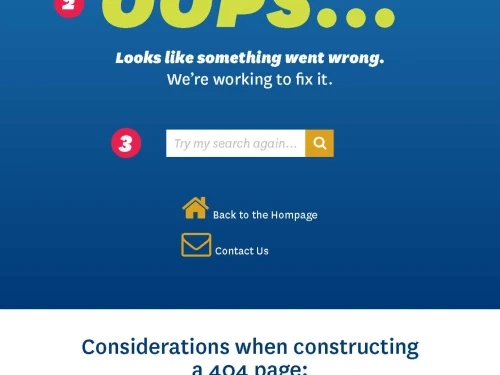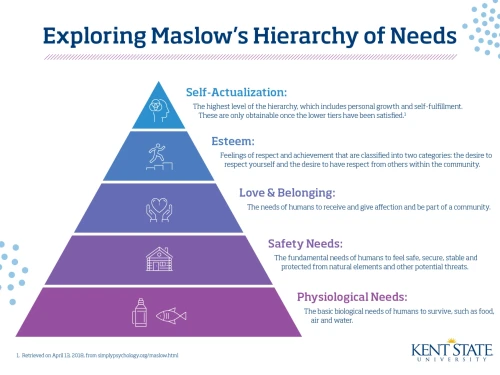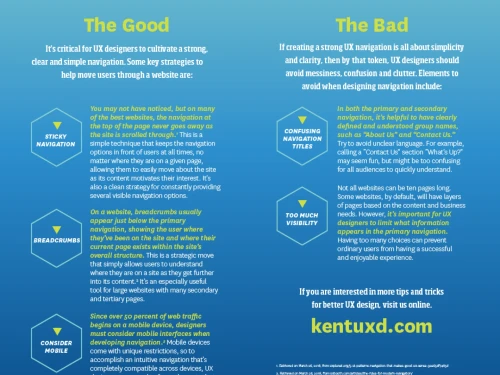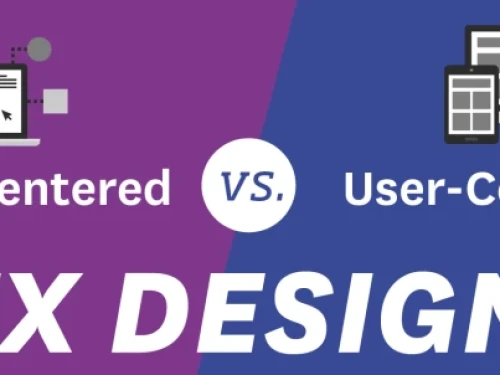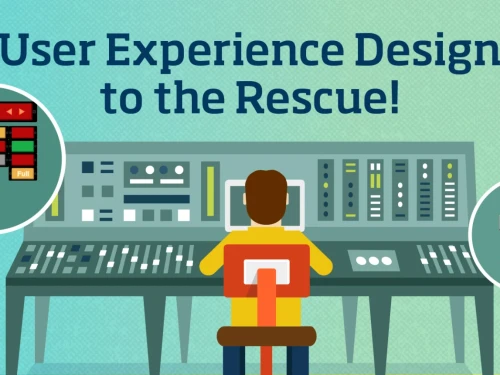College of Communication and Information
Read about the innovative programs, faculty expertise, and career opportunities at Kent State’s College of Communication and Information. Discover insights into fields like user experience design, library science, and health informatics. Learn how these interdisciplinary programs prepare students for dynamic, impactful careers in technology, communication, and beyond.
Related Blog Posts
With a projected 10-year job growth rate of over 20 percent,1 the field of user experience (UX) design is exploding right now, and a graduate-level UX degree can help you get into the fast lane of this ever-expanding career track. If you’re forward thinking, curious about UX design trends and someone who thrives in a fast-paced and dynamic environment, you just might have what it takes to be a successful UX designer—at least according to Ben Woods, a UXD professional with nearly two decades of experience and a faculty member at Kent State University.
Part of finding the perfect UX design career is building an awesome portfolio. Below, we’ve provided five easy steps to help you develop a portfolio that is sure to turn heads, helping to give you and your career the opportunity to excel.
As user experience (UX) designers consider their long-term career goals, some assume that management is the obvious next step. It’s true that the best managers usually have a background in the field they manage. But management also requires skills for which designers aren’t often trained, including leadership, time management, budgeting and interpersonal skills. Not every talented designer is a good fit as a manager, but for the right person, UX design management can be an immensely rewarding and satisfying career path.
An increased emphasis on interaction with digital platforms in the contemporary world means new career paths for creatives working in digital fields—especially those whose skills lend themselves to user experience (UX) design and development. If you’re a graphic designer thinking about a career change, consider making the switch to UX design.
Good user experience (UX) is good business. The average American internet user spends nearly 24 hours per week on the internet, and best practices in UX design have become crucial not only to success online, but also in the physical world, where online brand and service experiences carry over into other real-time interactions.1 But since the internet is where we largely work, study, socialize and shop today, implementing proven UX design principles can make the difference between successfully engaging users and losing them to competing sites and services.
Nobody likes a 404 page. It’s never the page you were trying to find, and it’s usually not your fault that you ended up there. Standard error messages can be inscrutable, and the typically austere 404 page itself can disconnect the user from the overall site experience, which can sour them to your site and even your brand. So how do you create a 404 page that is dynamic, that easily redirects the user back to the content they want and that’s even a little bit fun?
User experience design (UXD) is a strategic design approach that attempts to guide product or platform users through a meaningful and easy-to-navigate experience. While designers can use many methods to help their users navigate a given platform, how users will actually choose to interact remains outside UX designers’ control. Therefore, much of UXD inherently deals with the prediction of human behavior; this can be thought of as the psychology of UX design.
When a website is excellently designed, we tend not to pay attention to the reasons why it’s so great—we simply enjoy it. On the other hand, if a website is difficult to use or frustrating, we’re more likely to take note of exactly what is making our experience so bad. This phenomenon has a name: It’s called the negativity bias, and simply put, it’s the sociological explanation for why we’re more likely to notice a negative experience than a positive one.1 It turns out that negative experiences require more thought for us to process, as they take us away from the experience we expected and demand a shift or adjustment in our thinking and action.2 Unsurprisingly, these moments are more likely to stick with us than a moment that went perfectly according to plan.
Today’s interactive designers are tasked with consistently achieving something more than aesthetically striking creative. In today’s marketplace, digital media is king—and the evolving need for digital marketing is far more complex than that of more traditional marketing channels. Designers must consider the different journeys being undertaken by those for whom they are designing. They must design with the knowledge that 30 percent of all commerce is conducted on a mobile phone and let the platform a person may be using inform their work.1
On Saturday, January 13, 2018, a terrifying message populated the screens of over a million smartphones in Honolulu, Hawaii. It read: “BALLISTIC MISSILE THREAT INBOUND TO HAWAII. SEEK IMMEDIATE SHELTER. THIS IS NOT A DRILL.” As the world now knows, this turned out to be a false alarm. An investigation into the incident found that the message was sent by mistake when a state employee hit the wrong button during an internal drill.1
The experience one has when interacting with technology is fundamentally human. Our digital lives—from navigating a tablet to paying at a bank kiosk—have become so ubiquitous, interwoven and essential to the way we interact with the world and others, that it’s almost hard to remember what life was like before these technologies existed. Simply put, we depend on technology to move our lives forward. It plays a critical role in our individual storylines as well as our collective narrative.
When studying user experience (UX) online, there’s almost no greater source of knowledge than Andrew Shipka.
Most of us think about user experience (UX) design as a tech-oriented field, where expert coders build flashy apps and web experiences that dazzle. But as Ben Woods, assistant professor in Kent State University’s online Master of Science in UX Design program, points out, UX is “really all about people. It’s not about the technology.”
Today, when a person explains that they work as a user experience (UX) designer, chances are that more people understand what that means than they would have a decade earlier.1 As technology and innovation become more and more interwoven into the fabric of business, UX design is becoming an increasingly ubiquitous function.
Websites, eCommerce sites, email campaigns, eReaders, mobile apps and more—if you’ve used a screen or a keyboard lately, you’ve touched the work of someone with a job in user experience design (UXD).
For students who have prior experience in UX, come to the program with a willingness to challenge what you already know. While you may have developed a specific technique or process, use the program’s curriculum as an opportunity to supplement or improve your skillset.
Q&A with user experience design student, Jessica K (Kent State Online, ’17)
Q&A with user experience design student, Jessica K (Kent State Online, ’17)
Q&A with user experience design student, Jessica K (Kent State Online, ’17)
Q&A with user experience design student, Jessica K (Kent State Online, ’17)
When I started Kent State University’s UX master’s program, I was excited about the opportunity to advance my education but apprehensive, because I had no UX experience prior to my enrollment. My expectations were to gain a general understanding of UX, develop a foundation for UX practices and be able to build a portfolio that I could use professionally in search for a career in UX.
When I was considering the Kent State program, I read some UX message boards where posters warned that having a master’s degree in UX would somehow make me less marketable, but now, having finished, the opposite has been true.
Like many, you may be interested in user experience design (UXD) as a concept. Yet, you may be in a different field and unable to see a clear connection of how your career could ever transition into UX design.
I can’t emphasize this enough: Consider each deliverable as possible portfolio material. Starting the course, I was so focused on learning, getting good grades and hitting those deadlines that I often overlooked adequately documenting the process. When it came time to create my portfolio, I struggled to recall all of the steps I took to arrive at my solution. Be sure to take some time after portfolio-worthy assignments to note the steps, objectives and results of your efforts. Your life will be much easier later on.
What makes someone a repeat visitor to a website or motivates them to share it with their networks via social channels? There isn’t one correct answer to either of these questions, because there is a multi-layered, strategic approach to attracting and converting people into frequent visitors. Generally speaking, the best way to achieve this goal is to provide the site audience with valuable, relevant content.
So you’re a UXD professional tasked with building a website for a client that will not only draw people in, but keep them clicking around on the digital property for as long as possible. You’re aware that the Internet has caused people to consume vast amounts of information simultaneously, and a byproduct of this is that your site visitors have extremely short attention spans.
Incorporating video and a well-written, frequently updated blog can help attract the attention of consumers and potentially convert them into viable leads. Having a website that leverages social media integration can also help raise visibility and boost traffic.
Most people considering a career in UXD may not fully understand the difference between user interface vs. user experience, but it’s a critical piece of of knowledge to understand. Ryan Spencer, a UX professional, explains these concepts in the most simple, yet matter-of-fact way possible.
Since you made it to this post, you’ve most likely heard of user experience design (UXD). You may even have a clear understanding of what it means already. For those who don’t, however, a UX designer is a person who works to make a platform or product as user-friendly, enjoyable and useful as possible for end users. This involves seamlessly integrating digital systems and technology into both traditional products and new, innovative products.
It’s no secret that we live in a digital world. The Internet has forever shifted the way that we listen to music, watch videos, read the news and connect with people from all over the world. When it comes to marketing and advertising, brands often try to make an impact with consumers using a variety of media, while hosting them all on a single website.

